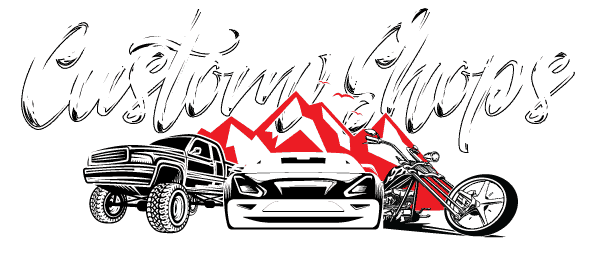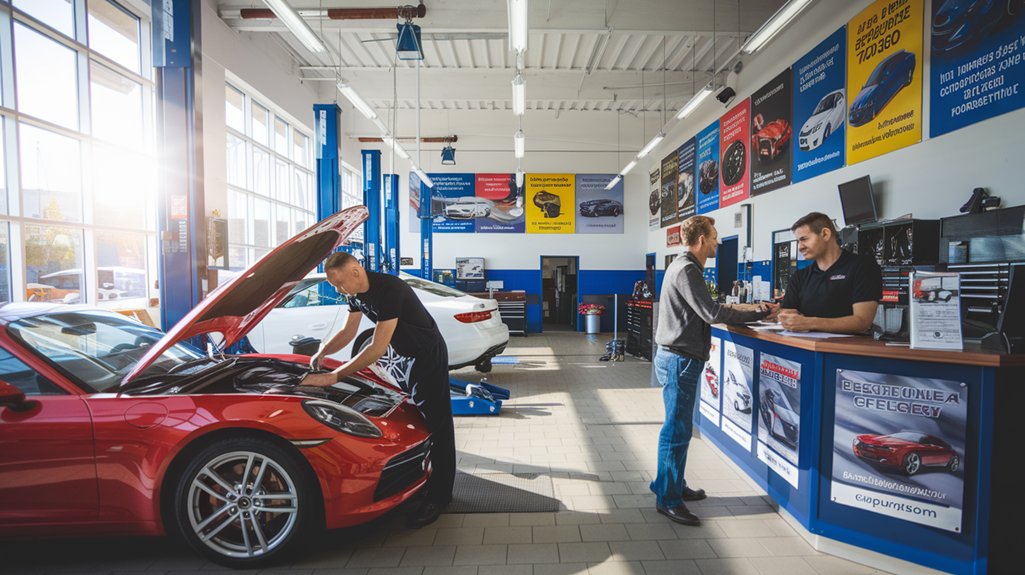
Introduction
Imagine a potential customer with a car problem searching for “auto repair near me” on their phone. They’re not looking for a shop in another city or even across town—they want a reliable, nearby option they can turn to right away. As a repair shop owner, how do you ensure your business shows up at the top of their search results?
This is where local SEO (Search Engine Optimization) comes in. Local SEO helps businesses like yours show up in search results for people in your area, especially when they’re looking for specific services. Unlike general SEO, which aims to attract a global audience, local SEO focuses on increasing your shop’s visibility within your local community. Whether you own an automotive, motorcycle, or RV repair shop, local SEO is essential to attract and retain nearby customers. In this guide, we’ll break down the steps to optimize your online presence, increase your visibility, and ultimately drive more customers to your door.
Google Business Profile Setup
One of the most effective tools for improving your shop’s local search presence is Google Business Profile (GBP). GBP is free, and it allows you to manage how your business appears on Google Search and Google Maps, ensuring that local customers can easily find and contact you. Here’s how to set up and optimize your profile for maximum impact.
Step 1: Claim or Create Your Profile
If you haven’t already claimed your Google Business Profile, start by visiting the Google Business Profile website. Enter your business’s name, address, and other essential details. If your business is already listed, you’ll see it in the search results and can claim it by verifying your ownership. Verification usually involves receiving a postcard from Google with a unique code, which you then enter to confirm that you own or manage the business.
Step 2: Optimize Key Fields
Once your profile is claimed, it’s time to ensure all your details are accurate and complete. Here are some key fields to focus on:
- Business Name: Make sure your business name matches exactly as it appears on other listings and your website.
- Address: Enter your shop’s address correctly to help customers find your location easily. If you serve specific areas, you can list them under “Service Areas.”
- Phone Number: Include a direct phone number that connects customers to your shop. Avoid using call-tracking numbers if possible, as they can cause inconsistencies in search results.
- Hours of Operation: Clearly list your hours, including any seasonal changes or holiday hours.
Step 3: Add High-Quality Photos
Images are a powerful way to attract new customers, so make sure to include photos that highlight your shop’s services and atmosphere. Here are some tips for choosing the best images:
- Exterior Photos: Help customers identify your location by posting clear, high-resolution photos of the shop’s exterior.
- Interior Shots: Show customers what to expect inside, whether it’s a welcoming waiting area, organized workspace, or state-of-the-art equipment.
- Action Shots: Include photos of mechanics at work or recent repair jobs (with permission) to showcase your services.
Step 4: Choose the Right Categories and Service Areas
Choosing accurate categories and defining your service areas can help your business appear in more relevant searches. For example, if you offer motorcycle repairs, include that as a category. Additionally, list all areas you serve, especially if you provide mobile repair services or cover a wide region.
With a fully optimized Google Business Profile, your shop is more likely to stand out in local search results and attract customers nearby who are actively seeking your services.
Local Listings
Consistency across online directories is another crucial element of local SEO. When your business details are consistent across multiple platforms, it reinforces your credibility with search engines and increases the chances of ranking higher in local search results. Here’s how to optimize your listings on major directories.
Step 1: Choose Key Directories
While Google Business Profile is a priority, it’s essential to list your shop on other popular directories, including:
- Yelp: Create or claim a Yelp listing, add photos, and encourage satisfied customers to leave reviews.
- Facebook: Set up a Facebook page with complete details, including a link to your website and hours of operation.
- Bing Places: Bing may not be as popular as Google, but listing your business on Bing Places helps you reach customers who use this search engine.
- Industry-Specific Sites: Depending on your area, you may find industry-specific directories like AutoMD or MechanicAdvisor helpful for reaching targeted audiences.
Step 2: Keep Information Consistent
When creating or updating listings, make sure that your business name, address, and phone number (NAP) match exactly across all platforms. Small discrepancies, like abbreviating “Street” as “St.” on one listing but not another, can harm your local SEO efforts. Use a spreadsheet or SEO tool to track your NAP information across various listings and ensure consistency.
Step 3: Add Enhanced Details
Some directories allow you to add additional information, such as services provided, payment methods, and photos. Take advantage of these features to make your listings more appealing and informative. Also, regularly check your listings to keep them up-to-date, especially if you change hours, move locations, or expand your services.
By maintaining consistent and accurate listings across these directories, you build trust with search engines and increase the chances of appearing in top search results for local customers.
On-Site SEO for Location
Having an optimized website is another pillar of local SEO. By incorporating location-specific keywords into your site’s content, you can help search engines understand your business’s location and services.
Step 1: Use Location-Based Keywords
Incorporate local keywords throughout your website to signal to search engines where your business operates. Examples of keywords include:
- “[City] auto repair”
- “RV repair in [City]”
- “motorcycle service near [Neighborhood]”
Include these keywords in your homepage, service pages, and blog posts, but ensure they flow naturally within the content.
Step 2: Optimize Service Pages
Each primary service you offer should have its own dedicated page on your website. For example, create separate pages for “Brake Repair,” “Oil Changes,” and “Motorcycle Tune-Ups.” On each page, include local keywords in the content, headings, and metadata, like the page title and meta description.
Step 3: Use Metadata Wisely
Meta descriptions and title tags are essential for improving click-through rates from search results. For example, a meta description for your homepage might read, “Looking for reliable auto repair in [City]? Our shop offers expert service and competitive rates for all your vehicle needs.”
Optimizing these elements with location-specific terms increases your chances of showing up in local searches and encourages clicks from potential customers.
Customer Reviews
Customer reviews are a vital part of local SEO. Positive reviews build trust, enhance credibility, and boost your shop’s ranking in local search results. Here’s how to encourage more reviews and handle them effectively.
Step 1: Ask for Reviews
Satisfied customers are usually happy to leave a review if asked. Make it easy by providing a direct link to your Google Business Profile, Yelp, or Facebook page. You can also encourage reviews with follow-up emails or texts after service.
Step 2: Respond to Reviews
Whether positive or negative, responding to reviews shows that you care about customer feedback. For positive reviews, a simple “Thank you for choosing our shop!” can go a long way. For negative reviews, address the issue professionally, apologize if necessary, and offer a resolution.
Step 3: Make It Easy
Consider putting up signs in your shop or on your website with instructions for leaving a review. The easier you make it for customers to share their experience, the more reviews you’ll likely receive.
Tracking and Metrics
To measure the effectiveness of your local SEO efforts, monitor your website’s performance using tools like Google Analytics and Google Search Console.
- Google Analytics: Track website visits, especially from users within your local area. Look for patterns in traffic and see which pages attract the most visits.
- Google Search Console: This tool shows the keywords driving traffic to your site, as well as your site’s ranking in local searches.
Use these insights to understand what’s working and adjust your strategy to maximize local SEO success.
Conclusion & Call to Action
Local SEO may seem challenging, but by following these steps, your auto repair shop will be well-positioned to attract more nearby customers. Start by claiming and optimizing your Google Business Profile, maintaining consistent listings, and encouraging customer reviews. With a solid local SEO strategy, your shop can rise to the top of search results, helping you stand out from the competition. Begin with these steps today, and watch as your shop gains the visibility it deserves!

Brad Killgore is a Best Selling Author, Speaker, Military Veteran, and Strategic Marketing Expert with over 15 years of experience in the industry. Brad loves to spend time with his family and 3 grandchildren. He is an avid traveler who lives full-time with his wife in their luxury RV. He has worked on some of the biggest concert stages in the world and met some of the most famous Rock Stars on the planet. Brad is a car and motorcycle enthusiast who has attended thousands of concerts over the last 45 years. Brad has been featured on top media outlets for his outstanding marketing results for America’s Best Shops.







